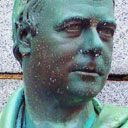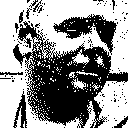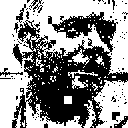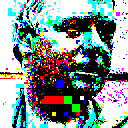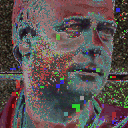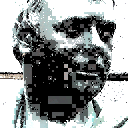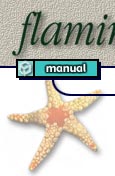


Pixel Trash
Pixel Trash gives pictures the crude, blocky look of early 1980's graphics.
To use this software, you need a paint program which accepts standard Photoshop 3.0 plugins.
Just put the plug-in filter into the folder where your paint program expects to find it. If you have Photoshop, the folder is Photoshop:Plugins:Filters or Photoshop:Plug-ins. You must restart Photoshop before it will notice the new plug-in. It will appear in the menus as Filters->Flaming Pear->Pixel Trash.
Most other paint programs follow a similar scheme.
If you have Paint Shop Pro: you have to create a new folder, put the plug-in filter into it, and then tell PSP to look there. In PSP's menus, choose File-> Preferences->General Program Preferences (PSP versions 5 and 6) or File->Preferences->File Locations (PSP version 7). Next, click the Plug-in Filters tab. Use a "Browse" button to choose the folder. The plugin will appear in the menus as Image->Plug-in Filters->Flaming Pear->Pixel Trash.
When you invoke Pixel Trash, a dialog box will appear:
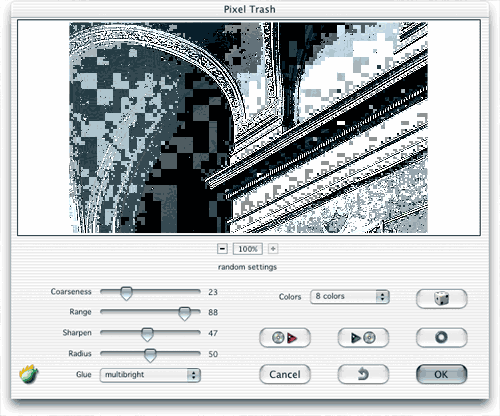
| Quick start |
|||
| If you just want to see some effects quickly, click the dice button
until you see something you like; then click OK.
Using the dice is the easiest way to use Pixel Trash. If you want to hand-tune your own effects, it helps to learn the controls, which are arranged in three groups. ...and there are some other controls that affect the overall look. |
dice
|
| Sharpening |
|||
|
Sharpness: this slider makes the edges contrastier, which repairs some of the intelligibility lost to blockiness. Radius: the thickness of the sharpened edges. |
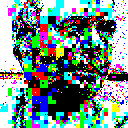 less sharp |
| Hints Click the dice a lot and try the glue modes called 'and,' 'or,' and 'xor.' |
| Version History Version 1.1 December 2003 Recordable as a Photoshop action. Version 1.0 May 2003 The first release. |
Questions
Answers to common technical questions appear on the Frequently Asked Questions page.
For bug reports and technical questions about the software, please write to support@flamingpear.com .
